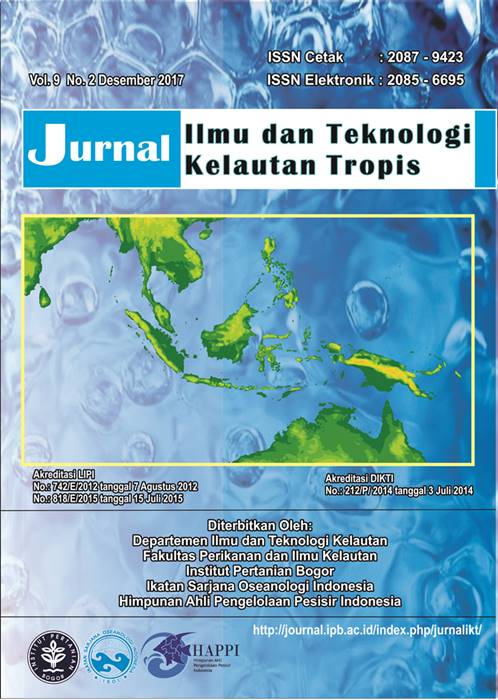AMINO ACID PROFILE AND BIOACTIVE COMPOUNDS OF SEAHORSE Hippocampus comes
Abstract
Seahorse is one of the marine living resources usually used as ornamental fish, traditional medicinal materials, and souvenirs. The purpose of the study was to determine the proximate composition of wet and dry seahorses, determine the profile of amino acid hydrolyzate and powder of seahorses, and determines to content of bioactive compounds from the ethanol extract of seahorses on qualitatively. The sample of this study is seahorses obtained from nature. Prviously, seahorses were morphometric identified, subsequently, seahorses were made of the powder, hydrolyzate, and ethanol extract. Several analyzes used were qualitative analysis of proximate, amino acid, and phytochemical analysis. Morphometric identification results indicate that the type is Hippocampus comes. The proximate composition is water content is 66.16 ± 0.33% (wet) and 10.33 ± 0.16% (dry), ash content of 9.55 ± 0.15% (wet) and 9.65 ± 0.16% (dry), lipid content 1.18 ± 0.23% (wet) and 4.89 ± 0.37% (dry), protein content of 22.73 ± 0.17% (wet) and 69.83 ± 0.31% (dry), carbohydrate 0.39 ± 0.23 (wet) and 5.50 ± 0.34 (dry). The amino acid composition both on hydrolyzate and powder comprising 9 essential amino acids are lysine, leucine, isoleucine, phenylalaline, valine, methionine, histidine, arginine, and threonine and 6 non essential amino acids are tyrosine, alanine, glycine, serine, glutamic acid, and aspartic acid. The results of identification of bioactive compounds is flavonoids, triterpenoids, steroids, saponins, and phenol of hydroquinone.
Keywords: Hippocampus comes, proximate analysis, amino acid, and bioactive compounds
Authors
This work is licensed under a Creative Commons Attribution 4.0 International License.
Jurnal Ilmu dan Teknologi Kelautan Tropis i is an open-access journal, meaning that all content is freely available without charge to the user or their institution. Users are allowed to read, download, copy, distribute, print, search, or link to the full texts of the articles in this journal without needing to request prior permission from the publisher or the author.
All articles published by Jurnal Ilmu dan Teknologi Kelautan Tropis are licensed under the Creative Commons Attribution 4.0 International License. This allows for unrestricted use, distribution, and reproduction in any medium, provided proper credit is given to the original authors.
Authors submitting manuscripts should understand and agree that the copyright of published manuscripts is retained by the authors. Copyright encompasses the exclusive rights of authors to reproduce, distribute, and sell any part of the journal articles in all forms and media. Reproduction of any part of this journal, its storage in databases, and its transmission by any form or media is allowed without written permission from Jurnal Ilmu dan Teknologi Kelautan Tropis.


